FRANCE
Grenoble

Grenoble
Grenoble
Grenoble (Grenoblo) is a city in the southeast of France. Grenoble lies at the foot of the French Alps, where the River Drac joins the Isère. Grenoble is the capital of the Isère department, in the Rhône-Alpes region. The current name of the city is derived from Gratianopolis in honor of the Roman emperor Gratian. The Winter Olympics were held there in 1968. The city is now an important scientific center in Europe.
According to the 2008 census, the population of the city of Grenoble was 156,659 inhabitants. The Grenoble metropolitan area had 664,832 inhabitants.
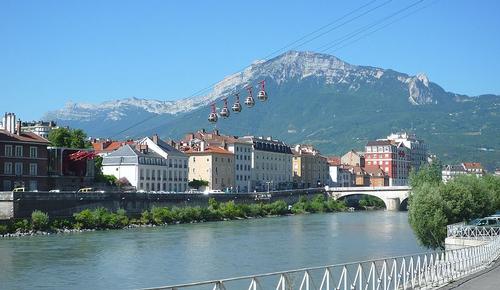 Grenoble PanoramaPhoto: Public Domain
Grenoble PanoramaPhoto: Public Domain
Location
The coordinates of Grenoble are: 45 ° 12'01 'North latitude and 5 ° 43'20' East longitude.
Grenoble is the capital of the French Alps. The city is surrounded by several mountain ranges: the Charteuse in the north, the Vercors in the south and west and the Belledonne massif in the east.
Grenoble is built on the alluvial plain of the Isère River and the River Drac at an altitude of 214 meters. The city has become a renowned sports center and attracts many tourists in summer and winter. There are twenty large and small ski resorts around the town, the nearest being Le Sappey-en-Chartreuse, which is approximately 15 minutes' drive away.
In the past, Grenoble and the surrounding areas had a lot of mining and heavy industry. Abandoned mines and factories can be found in small towns and villages, such as the La Mure coal mine.
Weather
The weather in Grenoble changes greatly from season to season and sometimes even during one day. The days are usually warm in the summer with temperatures reaching 20-26 °C. But at night the temperature can drop below 10 °C. In winter, the mountains around Grenoble are covered in snow, and you can also expect sub-zero temperatures in the city itself. The ski season lasts from the end of November to the beginning of April. May to September is the best time to visit Grenoble for summer activities, making the city a tourist attraction all year round.
History
Cularo was a small Gaul village on the River Isère in 43 BC. Grenoble now stands on the site of this village. A strong wall was built around the small town in 286 AD. Emperor Gratian visited Cularo and, as a token of gratitude for the warm welcome of the villagers, gave the village the title of Roman city. The place was renamed Gratianopolis ("city of Gratian") in 381. During the Middle Ages it became Graignovol and later Grenoble.
After the collapse of the Roman Empire, the city was part of the first Burgundian Empire in the 5th century and the second Burgundian Empire of Arles until 1032, when the city was integrated into the Holy Roman Empire.
Grenoble grew significantly in the 11th century during the reign of the Counts of Albon, who chose the city as the capital of their territory. Under the rule of Louis XI, the area (Dauphine) was linked to the Kingdom of France. At the time, Grenoble was a crossroads on the way to Vienna, Geneva, Italy and the Savoy. It was the industrial center of the Dauphine and the largest city in the province.
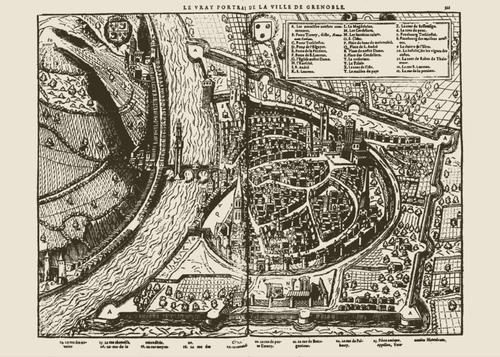 Grenoble around 1575Photo: Public Domain
Grenoble around 1575Photo: Public Domain
In 1790, the Dauphine was divided into three departments and Grenoble became the capital of the department of Isere. In the 19th century, Grenoble developed into an important industrial city, known for its glove factories. Gloves were exported to the United States, the United Kingdom and Russia.
During the Second World War, the Nazi invasion was stopped near Grenoble in June 1940 by the troops of General Cartier. The French troops held out until the armistice. Grenoble was very active in the resistance. On November 5, 1944, General Charles de Gaulle came to Grenoble and proclaimed the city "Compagnon de la Liberation" in order to recognize the heroic resistance of the inhabitants during the war.
In 1968 Grenoble was the host city for the tenth Winter Olympics. The city was modernized for this event, it got a new town hall and new infrastructure. With a new airport and modern highways and the opening up of ski areas, the area received an enormous boost.
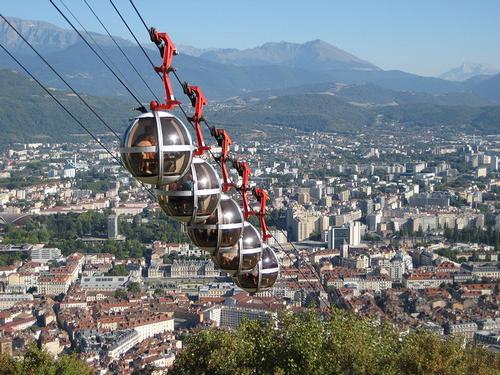 Grenoble Cableway Photo: Jörg Sancho Pernas CC 3.0 Unported no changes made
Grenoble Cableway Photo: Jörg Sancho Pernas CC 3.0 Unported no changes made
Sights
There are many beautiful sights in Grenoble that are very popular with the many tourists who are here on holiday or simply visiting the city.
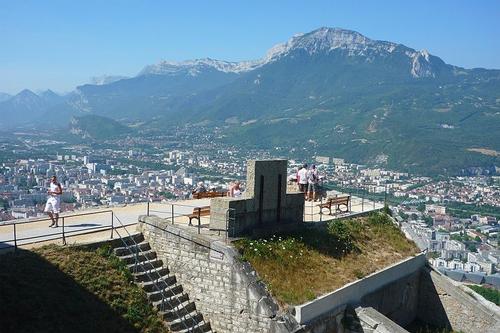 Grenoble BastillePhoto: Milky CC 3.0 Unported no changes made
Grenoble BastillePhoto: Milky CC 3.0 Unported no changes made
The Bastille is an old series of fortifications, they are located on the mountainside overlooking Grenoble and they are easily visible from many parts of the city. The Bastille is one of Grenoble's most visited tourist attractions and offers a beautiful view over the city and the surrounding mountains.
The Palace of the Dauphine's Parliament was built around 1500 and expanded in 1539. It was the site of the Dauphine's Parliament until the French Revolution. Then it became a courthouse.
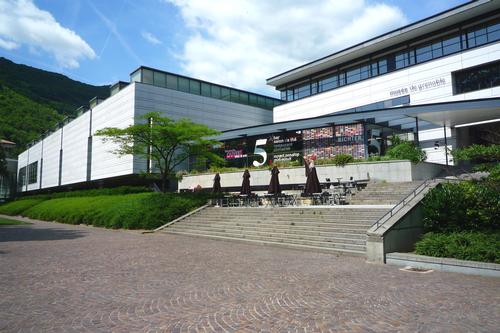 Musee de GrenoblePhoto: Milky CC 3.0 Unported no changes made
Musee de GrenoblePhoto: Milky CC 3.0 Unported no changes made
The Museum of Grenoble receives 200,000 visitors a year. This renowned museum has a rich collection of paintings from many periods in art history. The museum specializes in Egyptian, Greek and Roman antiquities.
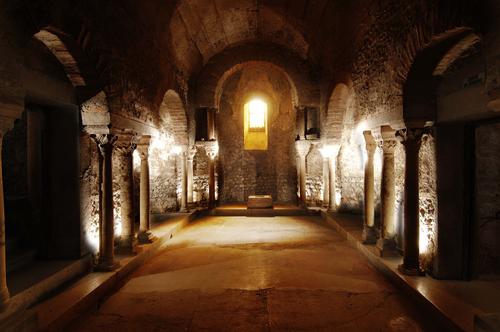 Crypte Saint-Laurent GrenoblePhoto: Musée archéologique de Grenoble CC 3.0 no changes made
Crypte Saint-Laurent GrenoblePhoto: Musée archéologique de Grenoble CC 3.0 no changes made
The Archaeological Museum of Saint-Laurent is located in the 12th-century Benedictine church in Saint-Laurent Square. The collections come partly from the archaeological excavations on site and date from the 3rd century AD. The museum is located on the right bank of the River Isère and offers an overview of many periods from art history to the origins of Christianity.
Tips
Grenoble has several festivals: the Grenoble Jazz Festival in March, the Open Air Short Film Festival in early July and a music festival at the end of July.
 MC2 GrenoblePhoto: Gallegre CC 3.0 Unported no changes made
MC2 GrenoblePhoto: Gallegre CC 3.0 Unported no changes made
The main cultural center of the city is called MC2 (Maison de la Culture, version 2), with music, theater and dance performances. There are several theaters in Grenoble, the main one being the Grenoble Municipal Theater. There are two main art centers in Grenoble: the National Center for Contemporary Art (also called Le Magasin) and the Bastille Art Center.
Useful links Grenoble
BBC Country ProfilesWorld Fact Book Explore all Countries
How to call
Last updated December 2025
Copyright: Team - The World of Info